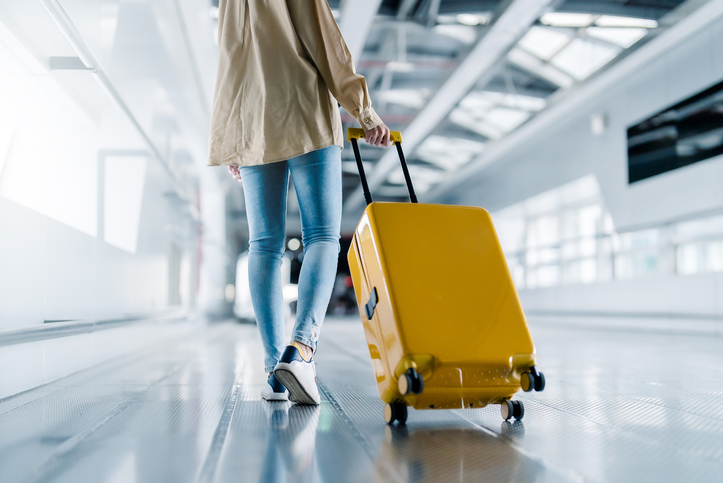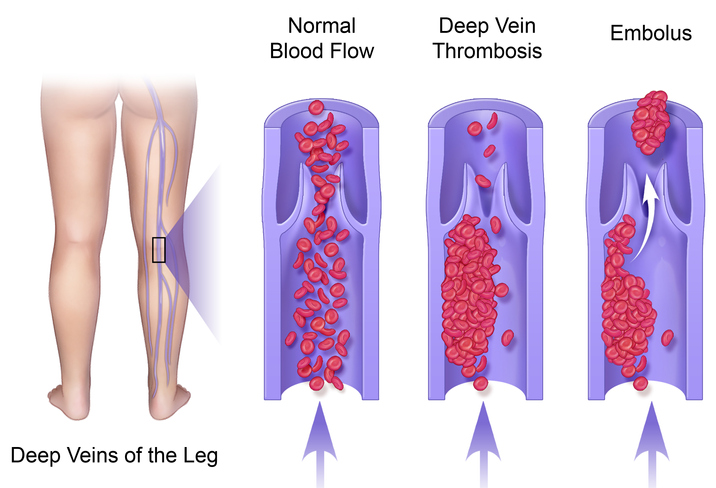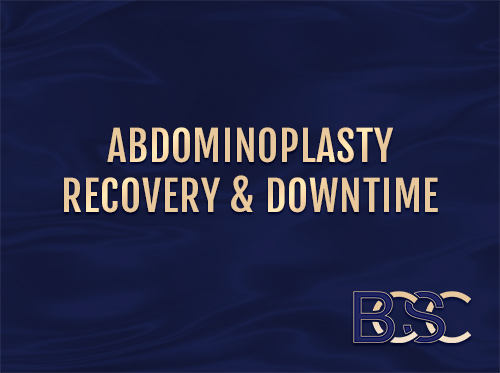Traveling After Arm Lift Surgery [ A Complete Guide ]
When it comes to travel after arm lift surgery, the answer is different for everyone. Your surgeon will let you know when it is ** to board a plane or drive long distances. If you have an upcoming work conference or holiday during the first month post-op, you may need to postpone your travel plans. Always follow your doctor’s advice, or you might develop a surgical complication.

Why are patients eager to travel after arm lift surgery?
Life doesn’t come to a stop when healing from surgery. You may have work obligations or a family event coming up as you recover from your arm lift procedure. These are some of the top reasons patients want to travel after an arm lift surgery:
- Traveling for work
- Traveling for holiday
- Traveling home after medical tourism
- Unexpected travel due to a family emergency
Reasons to Avoid Traveling Too Soon After Surgery
While you may feel anxious to resume normal activities, taking a long trip is not wise in the first few days or weeks after an arm lift procedure.
Travel can be stressful
Even the excitements or “good stress” from a trip can delay healing.
Tourism can be exhausting
While light activities can be beneficial to healing, it is crucial to get enough sleep and avoid overexerting yourself until fully healed.
You might be in trouble if a complication occurs
Your surgeon won’t be able to see or treat you if you travel far away. Consider that your destination is a place known for a high standard of medical care.
Travel plans can be unpredictable
Flights often get re-routed, which could mean an unexpected layover or extra time on-board a flight. Spending hours in an airport terminal can be ** while healing from surgery if your flight gets delayed due to bad weather or other circumstances.
Long periods sitting in a car or aboard a flight can raise the risk of blood clots
The worst case scenario is if part of the blood clot breaks off and travel to the lung, a potentially fatal condition known as pulmonary embolism.
Flying After Arm Lift Surgery

Find answers to common questions about airline travel after brachioplasty.
How soon can I fly after an arm lift?
Air travel is possible in the weeks after brachioplasty, but it does carry risks. Potential risks include blood clotting in the legs, which can lead to a pulmonary embolism. Government officials generally recommend delaying plane travel for ten to 14 days after an intensive surgical procedure, but a surgeon may advise waiting longer in some cases.
How can I lower the risk of blood clots and DVT while flying?
To decrease the risk of post operative complications like DVT, get up and walk the aisle for five minutes once an hour. Standing up might not be possible if the fasten-seatbelt light is on or if there is turbulence.
Can cabin air pressure cause my arm lift incisions to come apart?
Wound dehiscence is when the edges of the incision sites no longer meet. It is a relatively uncommon after arm lift surgery. The low barometric pressure as a flight takes off is unlikely to cause wound separation.
Does flying increase swelling after surgery?
After arm lift surgery, the arms will be very swollen. Low cabin pressure can increase feelings of bloating and swelling. Likewise, sitting for extended periods of time can cause leg and ankle swelling during flights. Getting up to walk around can mitigate swelling.
What should I wear on the plane after an arm lift procedure?
Wear loose, ** clothes in a breathable material. You do not want to wear anything too constrictive. Avoid itchy fabrics, which can irritate the healing incision site.
Is flying painful after an arm lift?
Pain and tenderness are common in the early healing process. During flights, even minor vibrations and turbulence can increase the pain levels experienced. Flying the first week or two after an arm lift would likely be quite **.
Will I be able to carry luggage after an arm lift operation?
You will need to avoid heavy lifting and bending for the first few weeks post-surgery so that you heal properly. While light physical activity can be beneficial, strenuous activity can strain the arms and incision sites. Someone will need to help lift and carry your luggage.
Will taking medications interfere with travel?
Those prescribed antibiotics or pain medication should ensure they have enough to last the entire trip. Travel hiccups can happen, causing a longer stay than anticipated. It may be challenging to refill medications abroad. Patients should also consider getting through airport security with their meds. If your pain medication includes a narcotic painkiller, keep the original pill bottle as proof it has been legally prescribed to you.
Should I wear my compression garments during the flight?
You should wear your compression garment as directed. That includes when you are in flight. If the compression garment feels too constrictive, you may need to adjust it mid-flight. It’s okay to remove the garment for a few minutes if it starts feeling hot or **.
Driving After Arm Lift Surgery
Traveling long distances by car is possible in the first few weeks after arm lift surgery with a few safety precautions.
Driving is off-limits for 14 to 21 days after arm lift surgery.
If you are planning a road trip, someone must drive you.
Take breaks to walk for at least five minutes each hour
Light walks will lower the risk of DVT from sitting in the car for an extended period of time.
You may need assistance carrying your luggage
Arm lift patients should avoid heavy lifting during the first four to six weeks after surgery. This includes loading heavy bags into the car.
Do not travel unless cleared by your surgeon
Always let your surgeon know of upcoming travel plans and avoid long car trips if they advise against it.
Ideally, wait at least a month after surgery before taking a long trip
The longer you can push your travel plans back, the better. Exercise good judgment and postpone your trip if you don’t feel well enough to travel.
Ask for help getting into the car
Pain is generally worst one week after an arm lift. Soreness and discomfort may last for several weeks to months. You may need help getting in and out of a vehicle, especially in the first two to three weeks.
Vacationing After Arm Lift Surgery
Most reputable surgeons advise against travel early in the healing process. It’s preferable to wait at least two to three weeks post-op, at minimum. Travel should never happen within the first few days after surgery. When planning a holiday, arm lift patients should carefully consider their timing, destination, and activities if the trip overlaps with their arm lift recovery time.
What clothes should I wear on vacation after an arm lift?
Pack soft, loose clothing in natural fabrics that won’t irritate your skin.
What if I have a complication from surgery when I’m away?
Let your surgeon know about your travel plans ahead of time. Before your trip, make a list of hospitals in the area you will be traveling to in case of a medical emergency. Your surgeon may provide a way to get in touch if you have a complication while on vacation. Remember to write down your surgeon’s phone number and keep it with you throughout your travels in case a surgical complication arises.
Can I spend time in the sun after arm lift surgery?
Sun exposure can lead to scar healing problems. To minimize scarring, wear sunblock or protective clothing during the first 12 months post-op. It’s especially important to keep your arm lift scars out from the sun if you vacation in a sunny destination.
How can I hide my arm lift scars while on vacation?
Most patients find the arm lift scars fade significantly after 12 to 18 months. The scars are usually darkest during the first six to nine months after arm lift procedures. If you plan to travel while your scars are still fresh, consider packing a cardigan, shawl, light jacket, or long-sleeve tops.
Will I have a higher risk of complications if I travel after surgery?
Traveling after an operation comes with some risks, including deep vein thrombosis. Frequent, light walks can lower the risk of DVT, but long treks are not a good idea in the first few weeks after arm lift surgery.
Is it safe to travel to high altitudes after arm surgery?
High-altitude vacation spots like the mountains may worsen swelling after arm lift surgery. Destinations below 2500 meters are generally **.
Can I go in a sauna or jacuzzi as I heal from an upper arm lift?
Avoid the steam room or hot tub if your hotel offers them. While relaxing, saunas and jacuzzis can exacerbate swelling and increase the risk of a skin infection as the wound heals.
What is the ideal sleeping position after an arm lift?
Surgeons generally recommend sleeping with the head in an elevated position to reduce swelling. During the first week or two, you may benefit from keeping your arms elevated over your head, resting on pillows. Sleeping on your back rather than your side will keep pressure off the upper arms.
Basic Tips for Traveling After Surgery
- Stay hydrated.
- Get proper rest.
- Limit your travel itinerary.
- Avoid strenuous activities.
- Keep stress to a minimum.
- Take breaks while sightseeing.
- Do not consume alcohol or salty foods.
- Avoid travel until cleared by your surgeon.
- Ask your surgeon what OTC pain medication to pack.
Summary
You will need to speak to your surgeon if you plan to travel after arm lift surgery. Your surgeon is familiar with the specifics of your treatment plan and underlying health factors that might impact how soon you can travel. Always follow your doctor’s aftercare advice. Failing to do so can put your health at risk and adversely affect your arm lift results.


